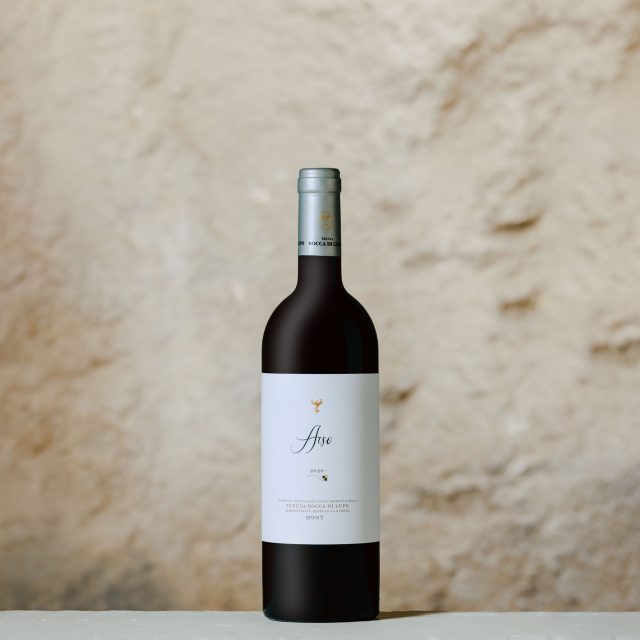This website uses cookies so that we can provide you with the best user experience possible. Cookie information is stored in your browser and performs functions such as recognising you when you return to our website and helping our team to understand which sections of the website you find most interesting and useful.
How Antinori is putting Puglia on the fine wine map with Cabernet Franc
Antinori is attempting to prove that Puglia can produce truly fine red wines with a £215 varietal Cabernet Franc, and while the new wine is outstanding, db is surprised by its name.

Called Arso, the brand does sound rather like a word in the English language that doesn’t need writing out here… but, in my view, it also lacks a pretty Italian-sounding appeal.
That is not a criticism one could level at Antinori’s most famous fine wine brand, Tignanello – which this newcomer is priced above – although you could say that ‘Arso’ is easier to say and remember than Tignanello, which is often abbreviated to just ‘Tig’.
So why was the name Arso chosen? Meaning ‘burnt’, the brand was inspired by the practice of burning stubble in this part of Puglia, which, when Antinori chief enologist and CEO, Renzo Cotarella smelt, and then saw the resulting charred land, decided to call his priciest wine from the area ‘Arso’.
More important than the name is the nature of the wine – which is delicious (see my tasting note at the end of this story) – and its aim, which is to show that Puglia can compete with Bolgheri and Bordeaux as a source of high-end, age-worthy reds based on Cabernet grapes.
Priced at £215, it is £65 more than Tignanello, which retails for around £150, meaning that Antinori is making a bold statement with Arso in terms of its price, particularly relative to Puglian wines, which tend to be keenly priced, if not bargains.
Indeed, Victoria Moore in The Telegraph this week highlighted the amazing value of region’s wines based on the Primitivo grape, in an article entitled, The wine world’s most underrated bestseller.
However, in justification of its high-price, Antinori points out that Arso’s production is tiny – just 3,000 bottles have been produced in its inaugural 2020 vintage, with the UK receiving 100 bottles, which are mainly destined for the restaurant sector. (To compare, around 25,000 cases of Tignanello are made annually).
The other bold aspect to Arso is the fact that it’s not made with an indigenous Puglian grape, nor blended with one. And it’s not mixed with other Bordeaux grapes, nor does it employ this French region’s flagship variety, Cabernet Sauvignon.
In other words, the choice of Cabernet Franc is surprising, but I also think it’s clever, as it’s a variety in vogue, particularly among sommeliers, and there are fewer competitors, because, as Cotarella admits, “It is a difficult vine to grow, it ripens before Cabernet Sauvignon, it can be generous on the entry and shorter on the finish.”
As for why he isn’t using a typically Puglian grape variety from the Antinori property, which is called Tenuta Bocca di Lupo, that’s partly because Cotarella is already making a top-end Aglianico – the £80 ‘Tormaresca’.
As he admits, “You can make the best Aglianico in the world, but it’s hard to make everyone fall in love with it,” while he also says that he wanted “to prove that Apulia can produce fantastic red wines from international grape varieties”.
However, Arso was made not just because it’s easier to pitch Bordeaux grapes into the global market for fine wines, but also due to the quality of Cabernet Franc from the estate, which comprises the 100-hectares of organically-farmed vines in the hilly Murgia area of Puglia.
The Cabernet Franc comes from a 10-hectare plot at 300m above sea level on small hill at the southernmost part of the estate, with “porous, friable” calcereous-tufa soils.
The wine, launched in London earlier this month from the 2020 vintage, followed “10 years of experimentation”, and “25 years of research and hard work with Aglianico, Fiano, Chardonnay, and Cabernet grape varieties,” according to Cotarella.
So what does it taste like? Well, read on for my thoughts on the wine.
Arso 2020
- ABV: 14.5%
- Bottle number: 0782 of 3,426
The wine has plenty of colour, with a deep ruby core and a narrow brick red rim. The aromas are inviting and reminiscent of fine ripe Super Tuscan reds, with notes of stewed cherry, sweet balsamic and cedar, with a touch of creamy chocolate and rosemary too. The texture is full but fresh, mixing a fleshy density with plenty of fine tannins, bringing a dry and mouth-watering edge. The flavours, like aromas, are deliciously rich in red berry characters, with raspberry and plum joining the cherry, along with some prune-like characters too, and then vanilla, cocoa and liquorice. While exhibiting a typically Puglian ripeness and warmth, the wine has a medium-weight feel, and an appealing, palate-cleansing fresh and grippy finish. An intense, and yet easy-to-drink Cabernet Franc, with neither too much jammy fruit, nor sweet oak – nor, the overtly green, nettle-like characters that can beset cooler climate / early harvested examples. In short, an exciting, balanced, and fully-ripe addition to the small scene of truly fine varietal Cabernet Francs. (Patrick Schmitt MW, May 2024)

